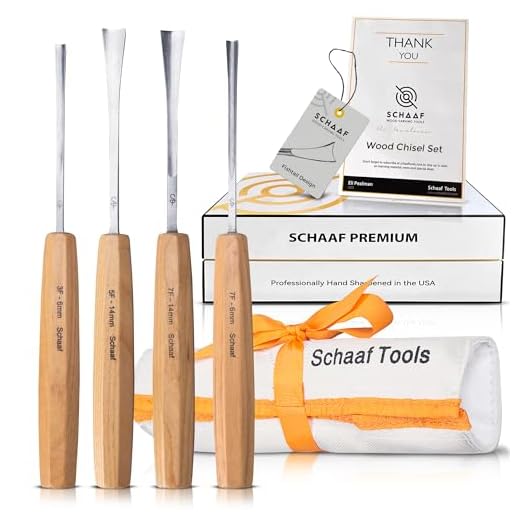




When it comes to testing the quality of steel for a chisel, there are several important factors to consider. The steel used in a chisel must be strong, durable, and resistant to wear and tear. It should also be able to hold a sharp edge for an extended period of time.
One of the most common methods used to test the quality of steel for a chisel is the Rockwell hardness test. This test measures the hardness of the steel by forcing a diamond cone or a hard steel ball into the surface of the material. The results are measured using a scale, with higher numbers indicating a greater hardness. A chisel made from high-quality steel will have a higher Rockwell hardness rating, indicating that it is more resistant to bending or chipping.
Another important test for evaluating the quality of steel for a chisel is the toughness test. This test determines how well the steel absorbs energy and resists fractures. Test samples are subjected to impact forces, and the amount of energy absorbed is measured. A chisel made from high-quality steel will have a higher toughness rating, indicating that it can withstand heavy use without breaking or becoming damaged.
In addition to hardness and toughness, the steel used in a chisel must also have good corrosion resistance. Corrosion can weaken the steel and affect its performance over time. To test for corrosion resistance, samples of the steel are exposed to various environmental conditions, such as saltwater or acidic solutions, and monitored for signs of rust or deterioration. A chisel made from high-quality steel will have excellent corrosion resistance, ensuring a longer lifespan and optimal performance.
Understanding Steel Testing Methods for Chisel Quality
When it comes to choosing a high-quality chisel, one of the most important factors to consider is the type of steel used in its construction. Steel is the backbone of any chisel, and its quality can greatly impact the tool’s performance and durability. To ensure that you are getting a reliable chisel, it is essential to understand the testing methods used to assess steel quality.
1. Hardness Testing
Hardness testing is one of the fundamental methods used to evaluate steel quality. This test measures the steel’s resistance to indentation, which can indicate its durability and ability to hold a sharp edge. There are several techniques used for hardness testing, including the Rockwell, Brinell, and Vickers methods. Each method provides a hardness value that can be compared to industry standards to determine the quality of the steel.
2. Toughness Testing
In addition to hardness, chisel steel must also possess good toughness to resist chipping and bending during use. Toughness testing involves subjecting the steel to impacts or bending forces to assess its ability to withstand these types of stress. Charpy and Izod tests are commonly used to measure toughness, and high-quality chisels should exhibit high toughness values to ensure they can withstand the demands of heavy-duty tasks without breaking.
3. Composition Analysis
The composition of steel, including the presence of specific alloying elements, greatly influences its properties. Analyzing the steel’s composition can provide valuable insights into its strength, toughness, and corrosion resistance. Common methods for composition analysis include optical emission spectroscopy (OES) and X-ray fluorescence (XRF) analysis. These techniques identify elements present in the steel and ensure that it meets the desired specifications for chisel performance.
4. Microstructure Examination
An in-depth examination of the steel’s microstructure can reveal important details about its quality. Microstructure analysis involves polishing a sample of the steel and using a microscope to observe its grain structure, carbide distribution, and any potential defects. This examination helps identify any abnormalities or inconsistencies in the steel, which could affect its performance and reliability.
By understanding the various steel testing methods for chisel quality, you can make a more informed decision when selecting a high-quality tool. It is important to rely on reputable manufacturers who adhere to strict quality control standards and perform thorough steel testing to ensure that their chisels meet or exceed industry expectations.
Importance of Testing for Chisel Steel
Testing for chisel steel is crucial to ensure the quality and reliability of the tool. Steel is the primary material used in chisel manufacturing, and it directly affects the performance and durability of the tool. Therefore, thorough testing and evaluation of the steel is essential.
One of the key properties to test for in chisel steel is hardness. The hardness of the steel determines its ability to withstand repeated blows without becoming deformed or damaged. Harder steel is generally more desirable for chisels, as it can retain its edge and provide better precision while cutting or shaping materials.
Another important factor to consider is the steel’s toughness. Toughness refers to the ability of the steel to withstand impact and resist fracture. Chisels are often subjected to high forces during use, and a tough steel can withstand these forces without breaking or chipping. Testing for toughness involves assessing the steel’s resistance to impact and its ability to absorb energy without fracturing.
Corrosion resistance is also a crucial aspect to test for in chisel steel. Chisels are frequently exposed to moisture and various corrosive elements, especially when used for woodworking or construction purposes. A steel that is resistant to corrosion will maintain its integrity even when exposed to moisture, preventing rust and deterioration that can compromise the tool’s performance.
Besides hardness, toughness, and corrosion resistance, other properties such as wear resistance, edge retention, and heat resistance can also be evaluated during the testing process. These properties play a role in determining the overall quality and longevity of a chisel.
| Properties Tested | Importance |
|---|---|
| Hardness | Determines durability and precision |
| Toughness | Withstands impact and prevents fracture |
| Corrosion resistance | Maintains integrity and prevents rust |
| Wear resistance | Ensures longevity and minimizes tool maintenance |
| Edge retention | Allows for extended use without frequent sharpening |
| Heat resistance | Handles high temperatures without compromising strength |
In conclusion, the testing of chisel steel is of utmost importance to ensure the performance, durability, and reliability of the tool. Evaluating properties such as hardness, toughness, corrosion resistance, and others helps manufacturers and users select the right steel for chisels, leading to better results and prolonged tool life.
Common Steel Testing Techniques for Chisel Quality
When it comes to determining the quality of steel used in chisels, there are several testing techniques that can be employed. These techniques help identify the strength, durability, and usability of the steel, ensuring that the chisel will perform well and last for a long time.
1. Hardness Testing
One common technique used to test the quality of steel is hardness testing. Hardness refers to the material’s resistance to indentation or scratching. In the case of chisels, high hardness is desirable as it ensures that the cutting edge will maintain its sharpness for a longer period of time. Various methods such as Rockwell hardness testing can be used to measure the hardness of the steel.
2. Toughness Testing
Toughness is another important characteristic of steel used in chisels. It refers to the steel’s ability to withstand impact and resist fracturing or breaking. To test toughness, techniques like Charpy or Izod impact testing can be utilized. These tests simulate impact forces and measure the amount of energy absorbed by the steel before it fractures. High toughness ensures that the chisel can withstand heavy use without breaking.
3. Wear Resistance
Chisels are subjected to repeated wear and tear, so it’s crucial to assess the steel’s wear resistance. Wear testing involves subjecting the steel to abrasive forces, often using a rotating abrasive wheel or sandpaper, and measuring how much material is lost. The lower the wear rate, the higher the wear resistance of the steel. The wear resistance of steel can be influenced by factors such as the presence of alloying elements and heat treatment processes.
4. Microstructure Examination
Microstructure examination involves analyzing the structure of the steel at a microscopic level. This examination can reveal the presence of any impurities, inclusions, or defects that might affect the chisel’s performance. Techniques such as optical microscopy or electron microscopy can be employed to examine the steel’s grain structure, carbide distribution, and overall cleanliness. A uniform and fine microstructure is indicative of good quality steel.
By employing these common testing techniques, manufacturers can ensure that the steel used in their chisels meets the necessary quality standards. This will result in chisels that are strong, durable, and effective in their intended applications.
Factors to Consider When Testing Chisel Steel
Testing chisel steel is essential to ensure that you have a high-quality tool that will perform optimally and withstand the rigors of professional use. There are various factors to consider when testing chisel steel to determine its quality and suitability for your specific needs. These factors include:
1. Hardness
Hardness is a crucial characteristic to consider when testing chisel steel. It determines the chisel’s ability to retain its edge and resist wear. To test the hardness of the steel, a common method is to use the Rockwell hardness scale. The higher the Rockwell hardness number, the harder the steel.
2. Toughness
In addition to hardness, toughness is another important factor when testing chisel steel. Toughness refers to the steel’s ability to resist breakage or chipping when subjected to impact or heavy-duty use. A chisel with high toughness will withstand repeated use without compromising its structural integrity.
3. Edge Retention
Edge retention is a critical aspect to consider when testing chisel steel. A chisel with good edge retention will maintain its sharpness and cutting performance for an extended period. Steel with high wear resistance will have better edge retention, allowing you to work efficiently without the need for frequent re-sharpening.
4. Corrosion Resistance
If you plan to use your chisel in environments with high moisture or exposure to corrosive substances, corrosion resistance becomes a crucial factor. Stainless steel is known for its excellent corrosion resistance, making it a popular choice for chisels used in corrosive environments.
5. Ease of Sharpening
When testing chisel steel, consider its ease of sharpening. Some steel types are harder to sharpen than others, requiring more effort and time. High-speed steel, for example, is known for its ease of sharpening, making it a popular choice for many chisels.
By considering these factors when testing chisel steel, you can ensure that you select a high-quality tool that will meet your needs and provide reliable performance for years to come.






